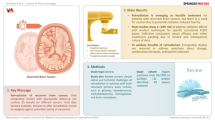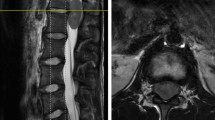Abstract
The purpose of this study is to evaluate the roles of resection extent and adjuvant radiation in the treatment of craniopharyngiomas. We reviewed the records of 122 patients ages 11–52 years who received primary treatment for craniopharyngioma between 1980 and 2009 at the University of California, San Francisco (UCSF). Primary endpoints were progression free survival (PFS) and overall survival (OS). Secondary endpoints were development of panhypopituitarism, diabetes insipidus (DI), and visual field defects. Of 122 patients, 30 (24%) were treated with gross total resection (GTR) without radiation therapy (RT), 3 (3%) with GTR + RT, 41 (33.6%) with subtotal resection (STR) without RT, and 48 (39.3%) with STR + RT. Median age at diagnosis was 30 years, with 46 patients 18 years or younger. Median follow-up for all patients was 56.4 months (interquartile range 18.9–144.2 months) and 47 months (interquartile range 12.3–121.8 months) for the 60 patients without progression. Fifty six patients progressed, 10 have died, 6 without progression. Median PFS was 61.1 months for all patients. PFS rate at 2 years was 61.5% (95% CI: 52.1–70.9). OS rate at 10 years was 91.1% (95% CI 84.3–97.9). There was no significant difference in PFS and OS between patients treated with GTR vs. STR + XRT (PFS; p = 0.544, OS; p = 0.735), but STR alone resulted in significantly shortened PFS compared to STR + RT or GTR (p < 0.001 for both). STR was associated with significantly shortened OS compared to STR + RT (p = 0.050) and trended to shorter OS compared to GTR (p = 0.066). GTR was associated with significantly greater risk of developing DI (56.3 vs. 13.3% with STR + XRT, p < 0.001) and panhypopituitarism (54.8 vs. 26.7% with STR + XRT, p = 0.014). In conclusion, for patients with craniopharyngioma, STR + RT may provide superior clinical outcome, achieving better disease control than STR and limiting side effects associated with aggressive surgical resection.


Similar content being viewed by others
References
Bunin GR, Surawicz TS, Witman PA et al (1998) The descriptive epidemiology of craniopharyngioma. J Neurosurg 89:547–551
Moore K, Couldwell WT (2000) Craniopharyngioma. In: Bernstein M, Berger MS (eds) Neuro-oncology: the essentials. Thieme, New York
Harwood-Nash DC (1994) Neuroimaging of childhood craniopharyngioma. Pediatr Neurosurg 21:2–10
Karavitaki N, Cudlip S, Adams CB et al (2006) Craniopharyngiomas. Endocr Rev 27:371–397
Stripp DC, Maity A, Janss AJ et al (2004) Surgery with or without radiation therapy in the management of craniopharyngiomas in children and young adults. Int J Radiat Oncol Biol Phys 58:714–720
De Vile CJ, Grant DB, Kendall BE et al (1996) Management of childhood craniopharyngioma: can the morbidity of radical surgery be predicted? J Neurosurg 85:73–81
Honegger J, Buchfelder M, Fahlbusch R (1999) Surgical treatment of craniopharyngiomas: endocrinological results. J Neurosurg 90:251–257
Kalapurakal JA, Goldman S, Hsieh YC et al (2000) Clinical outcome in children with recurrent craniopharyngioma after primary surgery. Cancer J 6:388–393
Yang I, Sughrue ME, Rutkowski MJ et al (2010) Craniopharyngioma: a comparison of tumor control with various treatment strategies. Neurosurg Focus 28:E5
Lin LL, El Naqa I, Leonard JR et al (2008) Long-term outcome in children treated for craniopharyngioma with and without radiotherapy. J Neurosurg Pediatr 1:126–130
Merchant TE, Kiehna EN, Sanford RA et al (2002) Craniopharyngioma: the St. Jude Children’s Research Hospital experience 1984–2001. Int J Radiat Oncol Biol Phys 53:533–542
Hetelekidis S, Barnes PD, Tao ML et al (1993) 20-year experience in childhood craniopharyngioma. Int J Radiat Oncol Biol Phys 27:189–195
Scott RM, Hetelekidis S, Barnes PD et al (1994) Surgery, radiation, and combination therapy in the treatment of childhood craniopharyngioma—a 20 year experience. Pediatr Neurosurg 21:75–81
Thomsett MJ, Conte FA, Kaplan SL et al (1980) Endocrine and neurologic outcome in childhood craniopharyngioma: review of effect of treatment in 42 patients. J Pediatr 97:728–735
Kiehna EN, Merchant TE (2010) Radiation therapy for pediatric craniopharyngioma. Neurosurg Focus 28:E10
Einhaus SL, Sanford RA (1999) Craniopharyngiomas. In: Albright L, Pollack I, Adelson D (eds) Principles and practice of pediatric neurosurgery. Thieme, New York
Liu AK, Bagrosky B, Fenton LZ et al (2009) Vascular abnormalities in pediatric craniopharyngioma patients treated with radiation therapy. Pediatric Blood Cancer 52:227–230
Merchant TE, Kiehna EN, Kun LE et al (2006) Phase II trial of conformal radiation therapy for pediatric patients with craniopharyngioma and correlation of surgical factors and radiation dosimetry with change in cognitive function. J Neurosurg 104:94–102
Karavitaki N, Brufani C, Warner JT et al (2005) Craniopharyngiomas in children and adults: systematic analysis of 121 cases with long-term follow-up. Clin Endocrinol 62:397–409
Weiner HL, Wisoff JH, Rosenberg ME et al (1994) Craniopharyngiomas: a clinicopathological analysis of factors predictive of recurrence and functional outcome. Neurosurgery 35:1001–1011
Minniti G, Esposito V, Amichetti M et al (2009) The role of fractionated radiotherapy and radiosurgery in the management of patients with craniopharyngioma. Neurosurg Rev 32(2):125–132
Acknowledgments
This research was supported in part by NIH Brain Tumor SPORE grant P50 CA097257 (DHK, KL, MSB), Nancy and Stephen Grand Philanthropic Fund (DHK), and The V Foundation (DHK).
Conflict of interest
No actual or potential conflicts exist.
Author information
Authors and Affiliations
Corresponding author
Rights and permissions
About this article
Cite this article
Schoenfeld, A., Pekmezci, M., Barnes, M.J. et al. The superiority of conservative resection and adjuvant radiation for craniopharyngiomas. J Neurooncol 108, 133–139 (2012). https://doi.org/10.1007/s11060-012-0806-7
Received:
Accepted:
Published:
Issue Date:
DOI: https://doi.org/10.1007/s11060-012-0806-7




